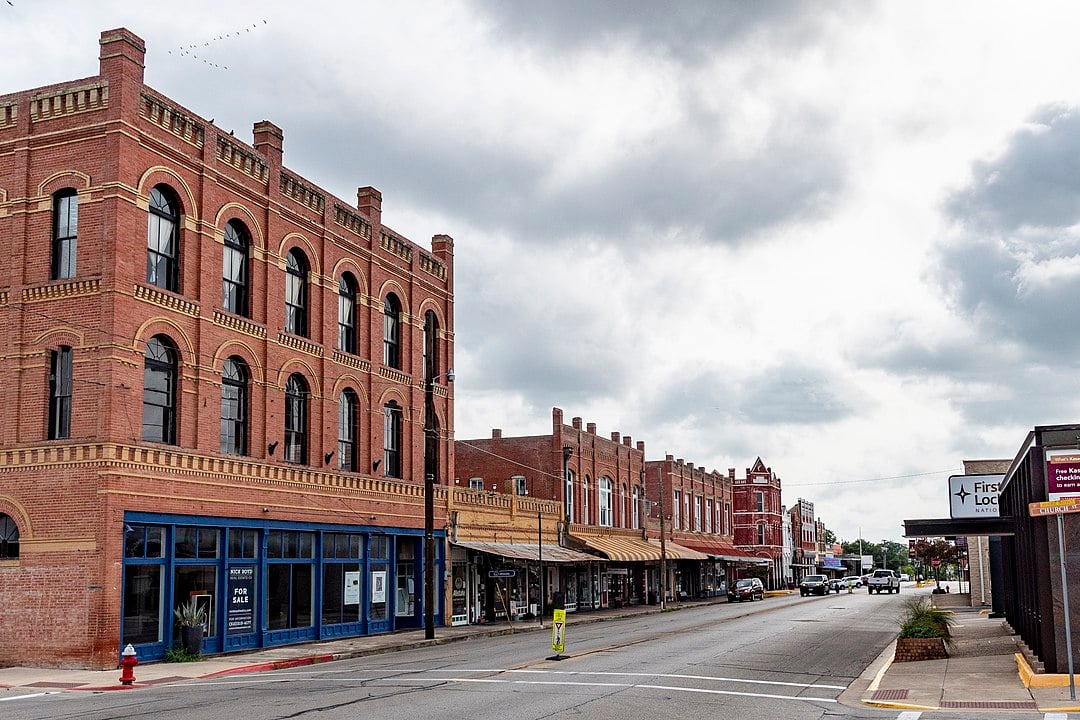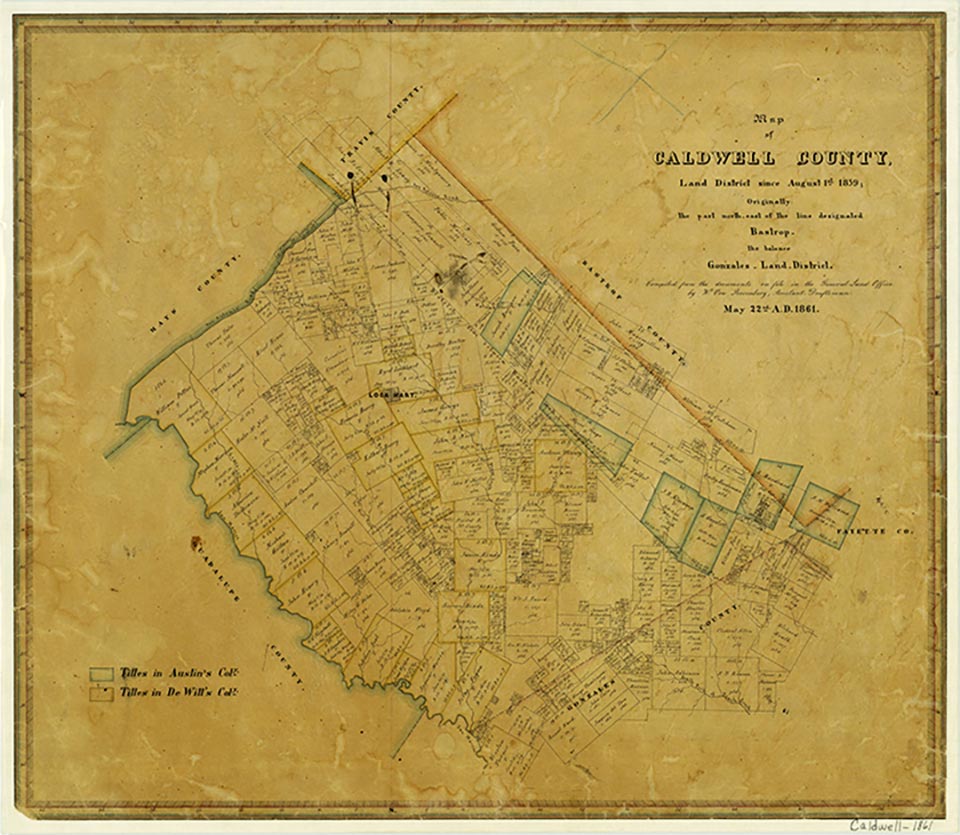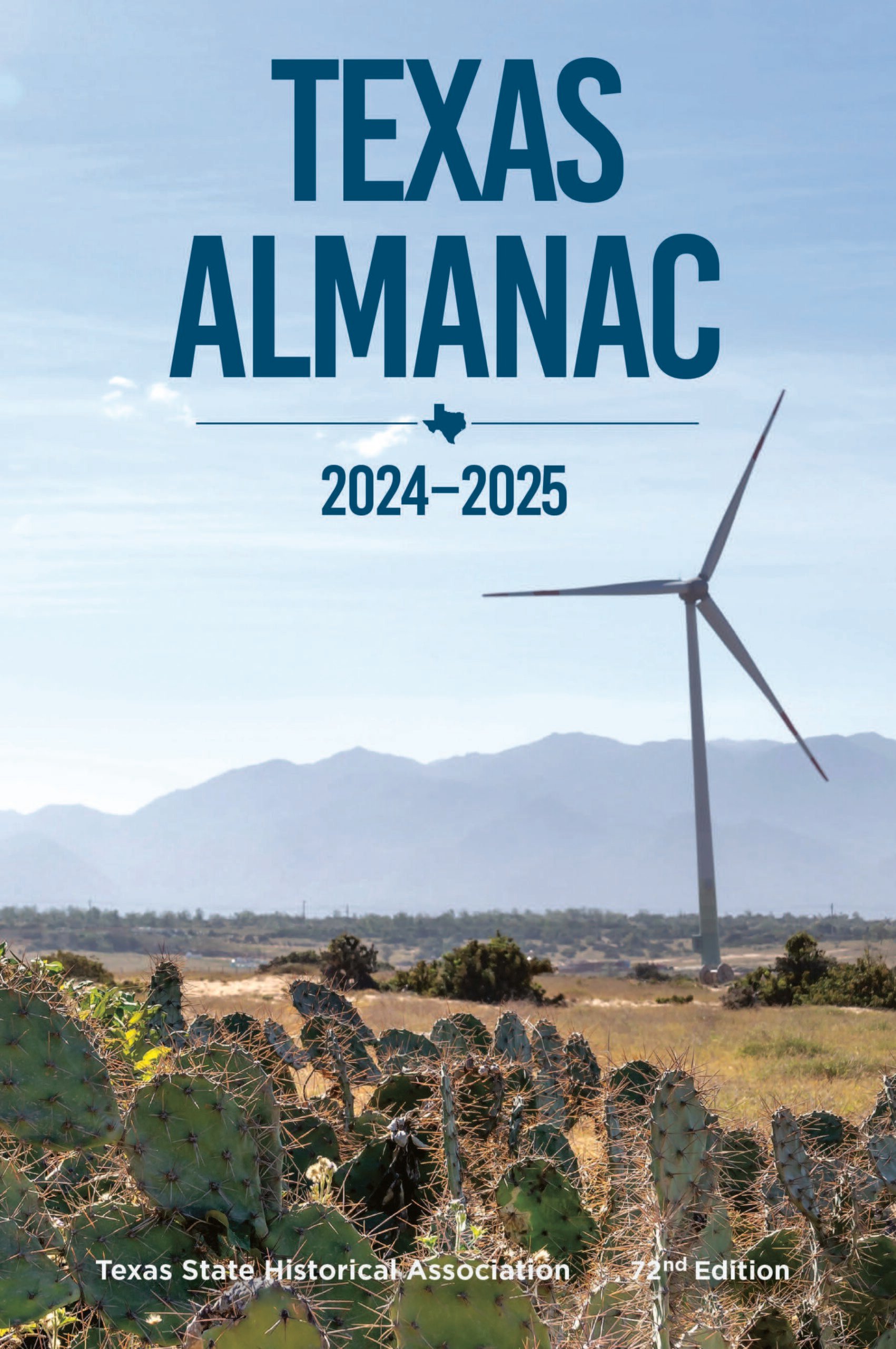Lockhart

Lockhart, Texas
Lockhart, county seat of Caldwell County, is at the intersection of U. S. Highway 183 and State Highway 142, thirty miles southeast of Austin. It was named for Byrd Lockhart, who in 1831 received the land that later became the Lockhart townsite as partial payment for his surveying work for the Mexican government. During the 1830s settlement in the area was limited by the threat of Indian raids, but after the battle of Plum Creek in 1840, more settlers began to arrive. By the mid-1840s, several families had made their home near Lockhart Springs, and when Caldwell County was established in 1848, the new town of Lockhart became the county seat. The Plum Creek post office, which had served the area since the previous year, was transferred to Lockhart. Lockhart was incorporated in 1852 with a mayor-council government. By that time the community was well established: Isabel Stewart began publishing a weekly newspaper in 1849 or 1850; the Lockhart Academy opened in 1850; a Masonic lodge, built in 1850, provided meeting space for both school and church functions; and by 1855 at least five different churches had been organized. An 1858 census of incorporated towns listed Lockhart with 423 residents. In the late 1860s Lockhart became a starting point for the Chisholm Trail, and, as such, developed as a regional trading center in the early 1870s. Beginning in 1874, however, the arrival of the Galveston, Harrisburg and San Antonio Railway in the southern part of the county and the subsequent establishment of Luling cut into business activity at Lockhart for several years. Lockhart continued to grow, but did not recover its dominance of the county economy until after 1887, when the completion of the Lockhart-San Marcos section of the Missouri, Kansas and Texas line increased access to outside markets. By 1890 Lockhart had electricity, a waterworks, streetcars, four schools, seven churches, and a national bank to serve its 1,233 residents. Aiding its economic growth was the establishment of two more rail lines: in 1889 the San Antonio and Aransas Pass connected Lockhart and Shiner (by way of Luling), and in 1892 the Missouri, Kansas and Texas extended its track from Lockhart to Smithville. In the 1890s and early 1900s Lockhart became an important regional center for processing cotton, with a cottonseed oil mill opening in 1893 and a compress in 1901. The turn of the century also brought the establishment of the Dr. Eugene Clark Library (still extant and said to be the state's oldest continuously operating city library) and Kreuz's Market (still selling barbecue in the early 1990s). The census of 1900 showed that the city population had nearly doubled in ten years, rising to 2,306.
The discovery of the Luling oilfield in 1920 again put Lockhart in economic second place in the county, but some Lockhart citizens were able to benefit from investments in the field. Though it did not boom as Luling did, Lockhart grew steadily, its population rising from 3,731 in 1920 to 5,018 in the early 1940s. During World War II the Lockhart-to-Luling branch of the railroad was abandoned (in 1942) as part of the war effort, but as each city had another rail line, neither was irreparably damaged. The agricultural nature of the county economy was reflected in the major businesses in Lockhart at that time: cotton gins and compresses, a creamery, a poultry-dressing plant, a peanut shelling and processing plant, and livestock marketing and shipping facilities. During the 1960s the population of Lockhart leveled off at slightly more than 6,000. In the early 1970s, residents became concerned that Lockhart might develop into a bedroom community for commuters to nearby Austin. In 1973, in an effort to avoid such a development, a group of Lockhart residents established the Lockhart Industrial Foundation, the function of which was to attract new businesses to Lockhart. Though in the early 1990s some Lockhart residents were commuting to jobs in Austin, the Foundation was fairly successful in attracting industries to Lockhart. One of the first of these businesses was the Kewaunee Scientific Corporation, which at one time employed 160 to 180 people; several smaller technology-based firms employed another twenty-five. Later the foundation helped bring the Wackenhut Corrections Corporation to Lockhart. Wackenhut Corrections, which leased city-owned space to run a private prison, brought Lockhart an additional 135 jobs. In 1978 the courthouse and several blocks of downtown Lockhart were listed in the National Register of Historic Places. The population was reported at 7,953 in 1980 and at 9,205 in 1990. The population was 11,615 in 2000. In the early 2000s, tourist attractions included a reenactment of the battle of Plum Creek during the annual Chisholm Trail Roundup, the Caldwell County Museum, and Lockhart State Park.
Vivian Elizabeth Smyrl | © TSHA

Adapted from the official Handbook of Texas, a state encyclopedia developed by Texas State Historical Association (TSHA). It is an authoritative source of trusted historical records.

- ✅ Adoption Status:
- This place is available for adoption! Available for adoption!
- Adopted by:
- Your name goes here
- Dedication Message:
- Your message goes here
Belongs to
Lockhart is part of or belongs to the following places:
Currently Exists
Yes
Place type
Lockhart is classified as a Town
Associated Names
- (Plum Creek 1)
Location
Latitude: 29.87986010Longitude: -97.68267400
Has Post Office
Yes
Is Incorporated
Yes
Population Count, 2021 View more »
14,844


